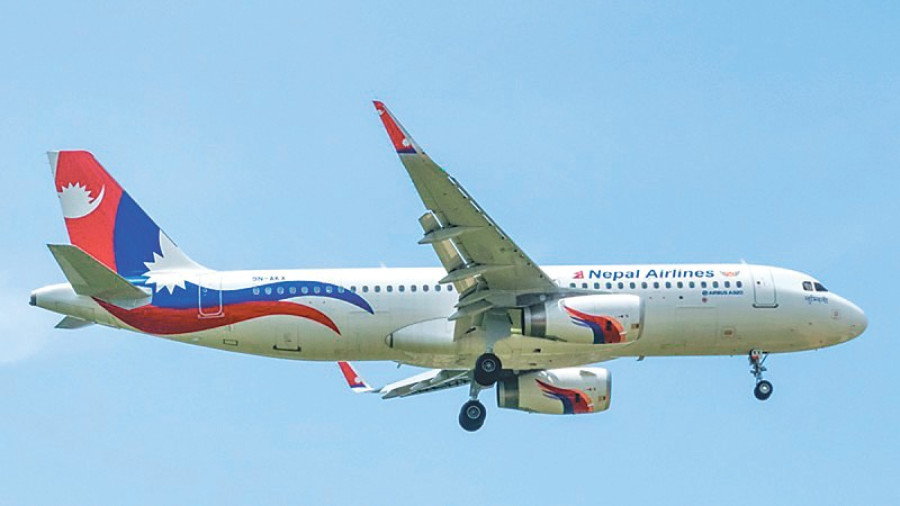Opinion
Aviation diplomacy
The history of aviation in Nepal dates back to 1949 with the landing of a Beechcraft Bonanza carrying the then Indian ambassador to Nepal. The first jet aircraft to land at Tribhuvan International Airport was a Lufthansa Boeing 707 in 1967. Five years later, the then Royal Nepal Airlines commenced jet operations with Boeing 727 aircraft.
The news that Nepal Airlines Corporation was going to resume flights to Japan truly enthused me not only because I work for the national flag carrier, but also because it was going to make a meaningful impact on the government’s tourism initiative to mark 2020 as Visit Nepal Year. Having direct air connectivity will not only link Nepal with the outside world but also help bring in significant revenues, thereby helping the tourism industry and beyond. Aviation diplomacy can play a crucial role in promoting Nepal’s tourism sector that has a major bearing on the country’s economy.
The history of aviation in Nepal dates back to 1949 with the landing of a Beechcraft Bonanza carrying the then Indian ambassador to Nepal. The first jet aircraft to land at Tribhuvan International Airport was a Lufthansa Boeing 707 in 1967. Five years later, the then Royal Nepal Airlines commenced jet operations with Boeing 727 aircraft. Nepal adopted a liberal sky policy in 1992 and since then it has been gradually pursuing an open sky policy in accordance with the Civil Aviation Policy 2006.
Air service agreements
Nepal has signed bilateral air service agreements and memorandums of understanding with 39 countries since 1963. However, the national flag carrier has experienced a decline in its operations over the last two decades with its international flights limited to only eight destinations, down from 12 in its heyday. There are 56 airports in the country; 50 have been fully built and six are under construction. Twenty-six international airlines compete for ever-increasing air passengers through this one airport—Tribhuvan International Airport. Although there are five exit points—Bhairahawa, Biratnagar, Kakarbhitta, Janakpur and Mahendranagar—for international airlines, Simara is the only entry route for aircraft flying into Nepal. It is used by almost all airlines and has been suffering from air traffic congestion.
The government’s 14th periodic plan has envisioned improving the management of Nepal Airlines by making it more competitive with the addition of aircraft to its fleet. The plan further expects that the construction of Gautam Buddha International Airport will be completed and two other airports—Pokhara International Airport and Nijgadh International Airport—will be constructed. The plan expects to have one airport in every province, and the number of countries having bilateral air service agreements to increase to 42 by the end of the plan period.
The Tourism Policy highlights the development of the aviation sector by giving importance to expanding Nepal Airlines by making it more reliable, punctual and efficient. It also directs the carrier to be operated under the private-public-partnership model. The Aviation Policy talks about improving licensing, air navigation, operational and legal issues by maintaining aviation security and flight safety.
Presently, the global aviation industry is on a high-growth trajectory, ushering in an era of rapid expansion. Augmented air connectivity has not only increased world trade activities by enabling faster and easier movement of passengers and goods but has also provided jobs to millions of people. Nepal must reap the benefits of this new growth by strengthening its air infrastructure, implementing visitor friendly initiatives and introducing relevant legislation.
While the International Civil Aviation Organisation has removed Nepal from its safety list, a positive sign and relief for Nepali Airlines, the country must first ensure that this never happens again, and second, it must immediately make forays into the European and American skies. This will not only diversify the visitor base but also bring in cash-rich visitors. Nepal’s second international airport in Bhairahawa, the birthplace of the Buddha, is expected to come into operation by the end of 2019. Another international airport in Pokhara is expected to come into operation by mid-2021.
Visitor flow
Nepal’s aviation sector can be improved significantly by breaking up the Civil Aviation Authority of Nepal into two independent organisations—one dedicated to formulating policies and rules as a regulatory body and another as a service provider to various airlines operating in Nepal. There is no alternative to promoting the national flag carrier Nepal Airlines for effective and efficient aviation diplomacy. In modern diplomacy, recognising the potential of aviation diplomacy as a form of soft power will play a vital role in promoting diplomacy between countries as it connects the nations of the world.
Strengthened aviation diplomacy with more and more countries will increase international visitor flow to Nepal and help spread a positive message. For Nepal Airlines to become a power player in the growing aviation market, it must add more planes to its fleet, increase the international footprint by adding new destinations, and improve service delivery through effective organisation management. Nepal Airlines can play an instrumental role in promoting the national economy through the use of soft power.
Bhandari is an account officer at the Nepal Airlines Corporation.




 11.12°C Kathmandu
11.12°C Kathmandu









